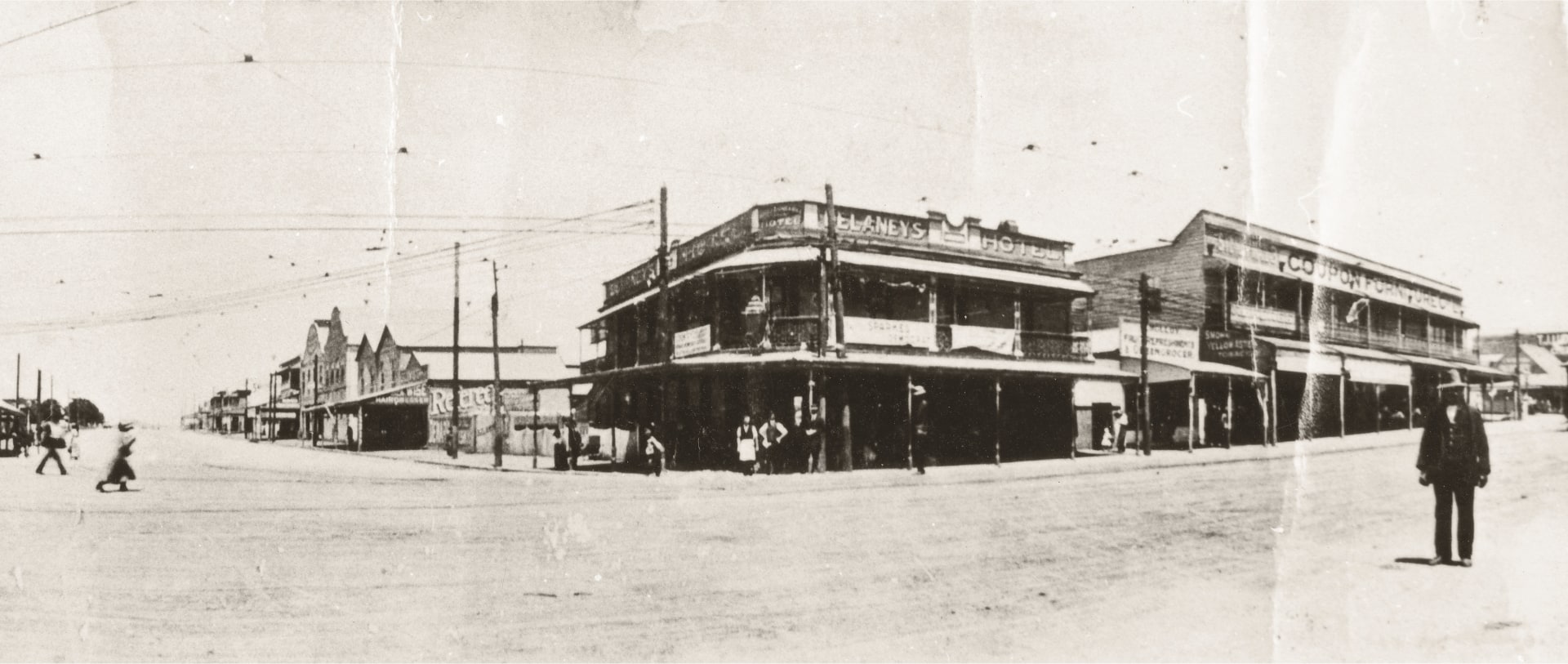Early roads, properties, and development
The main roadways through Woolloongabba – heading south and then southwest toward Ipswich, and southeast towards Logan – began as Aboriginal pathways. Early colonial traffic followed these tracks, as they provided the most accessible routes through the scrub and across watercourses. Wagons, buggies and bullock drays, provided the main traffic, along with pedestrians and riders on horseback making their way through important junctions like the Fiveways and Clarence Corner. Before there was a railway link to Ipswich, for example, all goods and traffic to the neighbouring city came through South Brisbane via Woolloongabba, and there overland along Ipswich Road.
They were subsequently surveyed as roads, and property allotments followed their alignment as land was made available for sale. Isolated cottages appeared, the first believed to have been occupied by a Charles Eastwood on Wellington Road around 1855 or 1856 (Brisbane Telegraph, 1971). More smaller allotments for housing were surveyed and sold around 1864, set among larger blocks that were taken up by a number of leading local personalities.
In the 1850s, for example, large paddocks in the area where purchased by men such as the Kangaroo Point butcher Joseph Darragh. Long-term Brisbane resident Charles Melton remembered that in the 1850s the land south of Vulture Street, to the edge of Norman and Kingfisher Creeks, was owned by just a handful of men: Darragh had 66 acres, while D.F. Longland (Superintendent of Works for the NSW Government before Separation in 1859) had 31 acres along Kingfisher Creek.
The Rev. Thomas Mowbray, a Scotsman and the leading Presbyterian minister in early Brisbane and a long-standing East Brisbane resident, had a neighbouring property that also fronted onto Vulture Street.
Beside him was land owned by Thomas Grenier, a Brisbane hotelier, some 24 acres in extent. This last property was between Vulture Street, Wellington Road and Logan Road, forming the eastern area of what was later known as Woolloongabba. (Melton, 1918: 349)
Among the paddocks appeared the first vestiges of industry. Timber cutters were active, and an early brickworks was established by Stephen Potter in around 1863 to exploit the clay deposits around the waters of Kingfisher Creek, with a shop to sell the bricks fronting onto Ipswich Road. These bricks, on one account, were used for the important new dry dock built at South Brisbane in the 1880s (Keliher, 1965).
As the area developed as a shopping destination, a number of businesses became prominent. One was the Coupon Furniture Company established in 1882 on the corner of Stanley and Gibbon Streets, adjacent to ‘Cruikshank’s Paints and Hardware’, known as Brisbane’s first store for general household items and hardware goods. Its premises later expanded to include an Ipswich Road frontage, and from 1981 traded as ‘Concept Furniture’. (Sunday Mail, 1985: 14-15). In its heyday, Coupon was famous for offering free home delivery via buggy. It was owned by the brothers Cyril and Roy Tritton, who expanded the business under the well-known Brisbane name ‘Trittons’. Their Gabba premises operated from the 1890s through to its closure in 1981, when the business continued as the Gabba Furniture Mart.


